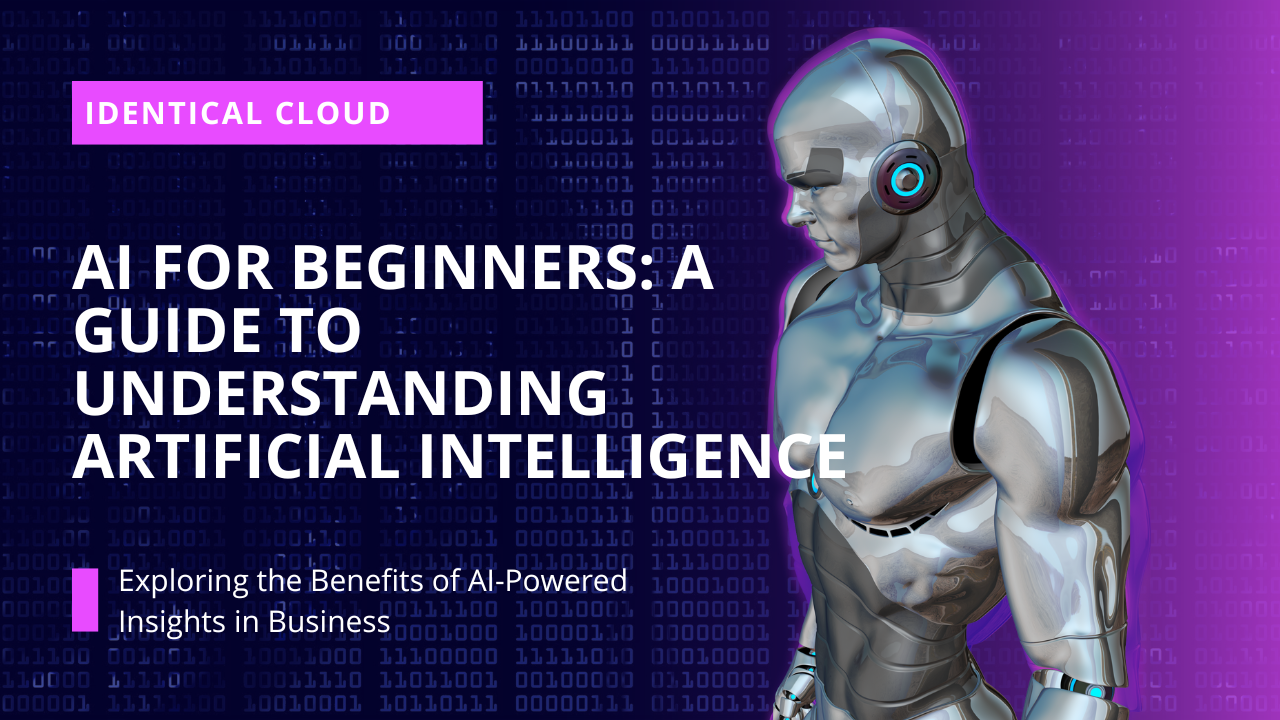
AI for Beginners: A Guide to Understanding Artificial Intelligence
AI for Beginners: A Guide to Understanding Artificial Intelligence
Artificial intelligence (AI) is a rapidly growing field with the potential to revolutionize many aspects of our lives. However, AI can be a complex and daunting subject for beginners. This blog post will provide a basic overview of AI, including its history, different types, and potential applications.
What is AI?
AI is the ability of machines to mimic human intelligence. This includes the ability to learn, reason, and solve problems. AI is often used to automate tasks that would otherwise be done by humans.
History of AI
The field of AI has its roots in the early 1950s. However, it really took off in the 1980s with the development of new machine learning algorithms. In recent years, there has been a rapid growth in AI research and development, driven by advances in computing power and the availability of big data.
Types of AI
There are many different types of AI, but some of the most common include:
- Machine learning: Machine learning algorithms are trained on data to learn how to perform a task. For example, a machine learning algorithm could be trained to recognize objects in images or to translate languages.
- Natural language processing: Natural language processing (NLP) systems are able to understand and process human language. This can be used for tasks such as text summarization, machine translation, and question answering.
- Computer vision: Computer vision systems are able to see and understand the world around them. This can be used for tasks such as object detection, facial recognition, and self-driving cars.
Key Concepts in AI
Machine Learning: Machine learning is a subset of AI that focuses on enabling machines to learn from data and improve their performance over time without being explicitly programmed. It involves algorithms that allow computers to recognize patterns, make predictions, and adapt to new information.
Neural Networks: Neural networks are a fundamental component of AI, inspired by the structure of the human brain. They consist of interconnected nodes, or “neurons,” that process and transmit information. Neural networks are used in various AI applications, including image and speech recognition.
Deep Learning: Deep learning is a subset of machine learning that involves neural networks with multiple layers. It has enabled significant advancements in AI, particularly in areas like image and language processing.
Natural Language Processing (NLP): NLP is a branch of AI that focuses on enabling computers to understand, interpret, and generate human language. NLP powers applications like chatbots, language translation, and sentiment analysis.
Robotics: AI-driven robots are designed to perform tasks autonomously or with minimal human intervention. These robots can range from industrial machines to robotic assistants that aid in various tasks.
How AI Works
AI systems work by processing and analyzing large amounts of data to recognize patterns and make predictions. Here’s a simplified overview of how AI works:
- Data Collection: AI algorithms require data to learn from. This data can be images, text, numbers, or any other form of information relevant to the task.
- Training: During the training phase, the AI system processes the data and adjusts its internal parameters to optimize its performance. This involves fine-tuning the algorithms to improve accuracy and predictions.
- Testing and Validation: After training, the AI system is tested on new data to ensure that it can make accurate predictions or classifications. This step helps identify any issues or biases that need to be addressed.
- Deployment: Once the AI system has been trained and tested, it can be deployed to perform real-world tasks, such as recognizing objects in images, providing recommendations, or generating text.
Real-World Applications of AI
AI has a wide range of applications across various industries:
- Healthcare: Diagnosing diseases, analyzing medical images, and drug discovery.
- Finance: Fraud detection, algorithmic trading, and risk assessment.
- Automotive: Self-driving cars, traffic prediction, and vehicle safety systems.
- Entertainment: Personalized recommendations, virtual reality, and video game design.
- Customer Service: Chatbots, virtual assistants, and sentiment analysis.
- Agriculture: Crop monitoring, pest detection, and precision farming.
Ethical Considerations in AI
As AI continues to advance, ethical considerations become increasingly important. These considerations include bias in algorithms, data privacy, job displacement, and accountability for AI decisions. Addressing these concerns is crucial to ensure that AI benefits society as a whole.
Potential Applications of AI
AI has the potential to revolutionize many aspects of our lives. Some of the potential applications of AI include:
- Self-driving cars: AI is being used to develop self-driving cars that can navigate roads and avoid obstacles without human input.
- Medical diagnosis: AI is being used to develop systems that can diagnose diseases more accurately than humans.
- Financial trading: AI is being used to develop trading systems that can make more profitable investment decisions than humans.
- Customer service: AI is being used to develop chatbots that can answer customer questions and provide support.
- Education: AI is being used to develop personalized learning systems that can tailor instruction to each student’s individual needs.
AI is a rapidly growing field with the potential to revolutionize many aspects of our lives. This blog post has provided a basic overview of AI, including its history, different types, and potential applications. If you are interested in learning more about AI, there are many resources available online and in libraries.
